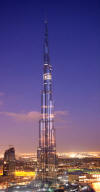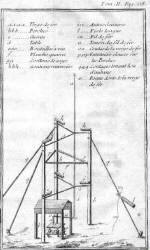Burj Khalifa Dubai Lightning Strike - January 11, 2010 |
|
1 |
2 | 3 |
4 | 5
| 6 |
7 | 8 |
9  By now you have
seen pictures of the Burj Khalifa Dubai - the world's tallest building. It stands 800 meters (2,625
feet) high and has more than 160 stories. A major concern other than earthquakes, high winds and terrorists
flying airplanes into it is lightning strikes. By now you have
seen pictures of the Burj Khalifa Dubai - the world's tallest building. It stands 800 meters (2,625
feet) high and has more than 160 stories. A major concern other than earthquakes, high winds and terrorists
flying airplanes into it is lightning strikes.Being the highest point in the area, the designers needed to install a system capable of shunting the energy all the way to ground level and dissipate it safely in the dry, sandy soil. That requires handling typically 1 to 10 billion joules of energy with currents as high as 50,000 amps. Thus far, it has worked well. In the unlikely event that I ever visit the tower, I'll still follow my father's admonition to not touch the light switches or faucet during a storm - just in case... Lightning rods were first used by Benjamin Franklin to protect the tall building in Philadelphia from catching fire every time a big lightning storm came along. The idea came from his experiments involving flying kites in electrical storms. Contrary to what a lot of people (RF Cafe visitors excluded), Franklin did NOT invent electricity; he proved that lightning was a form of electricity.
|
 This archive links to the many video and audio
files that have been featured on RF Cafe.
This archive links to the many video and audio
files that have been featured on RF Cafe.